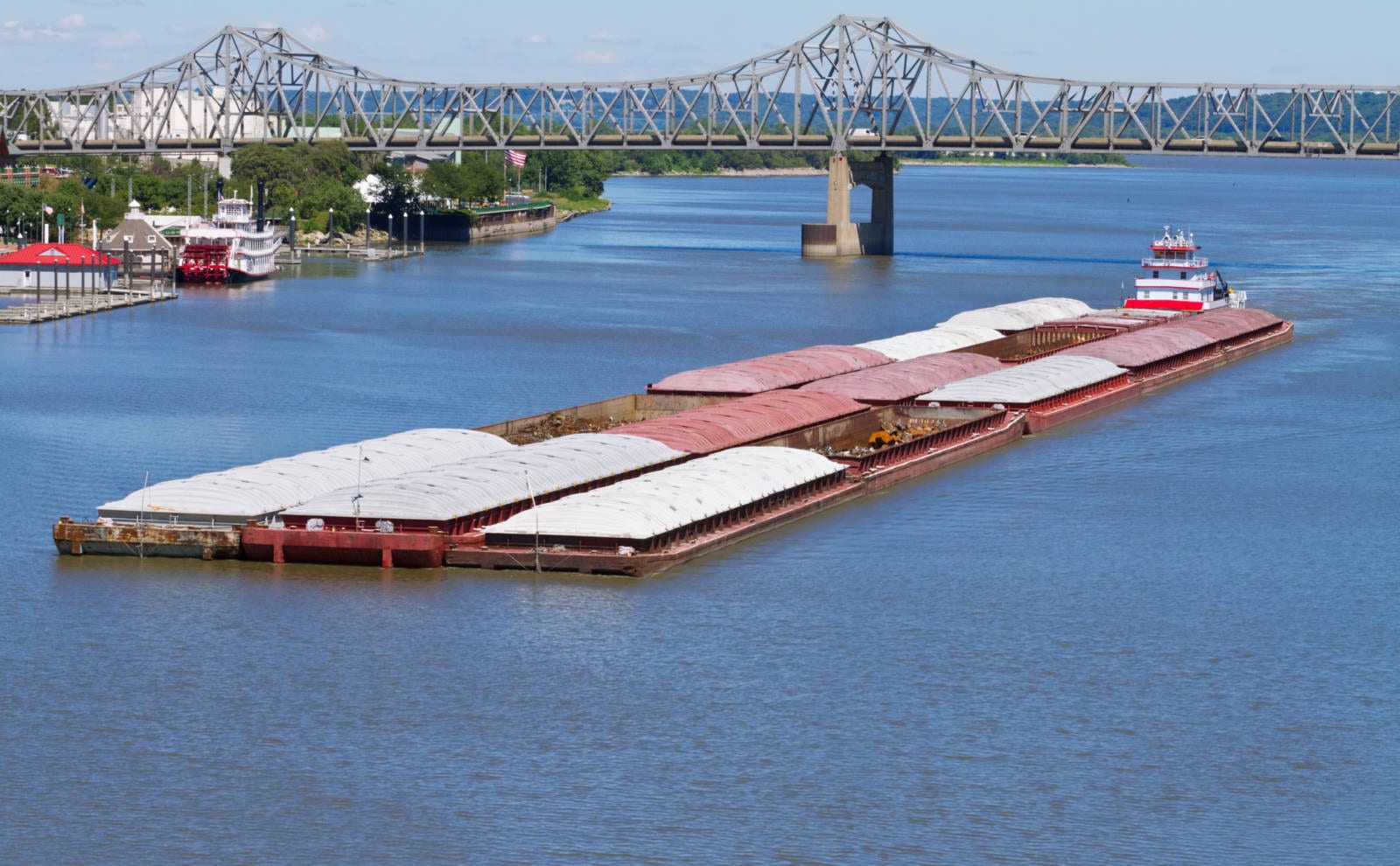According to the U.S. Department of Agriculture’s (USDA) Agricultural Marketing Service (AMS), “the U.S. Inland Waterway System utilizes a percent of tariff system to establish barge freight rates. The tariffs were originally from the Bulk Grain and Grain Products Freight Tariff No. 7, which were issued by the Waterways Freight Bureau (WFB) of the Interstate Commerce Commission (ICC). In 1976, the United States Department of Justice entered into an agreement with the ICC and made Tariff No. 7 no longer applicable. Today, the WFB no longer exists and the ICC has become the Surface Transportation Board of the United States Department of Transportation. However, the barge industry continues to use the tariffs as benchmarks as rate units.
“To calculate the rate in dollars per ton, multiply the percent of tariff rate by the 1976 benchmark. As an example, a 200 percent tariff for Minneapolis-St. Paul barge grain would equal 2.00 times the benchmark rate of $6.19, or $12.38 per ton. Each city on the river has its own benchmark (see table below), with the northern most cities having the highest benchmarks.”

The last time the river was closed due to high water in 2014, the percent of Illinois River barge tariff rate exceeded 1,000%. By comparison, in 2019, percent of tariff for Illinois River only exceeded 600% one week and fell below 400% during one of the most extreme weather events in U.S. history. Furthermore, the forward three-month rate is trading below the five-year and three-year averages.

While the oversupply of barges versus demand is taking a toll on barge companies, the tariff rates not skyrocketing is positive for soybean farmers. Declining barge freight rates and lower truck freight rates will improve the soybean basis in the Corn Belt. As dredging projects continue to be completed, expect barge freight rates to decline farther. One factor that would raise barge freight rates is a very strong export program, which would make everyone in the supply chain very happy.
